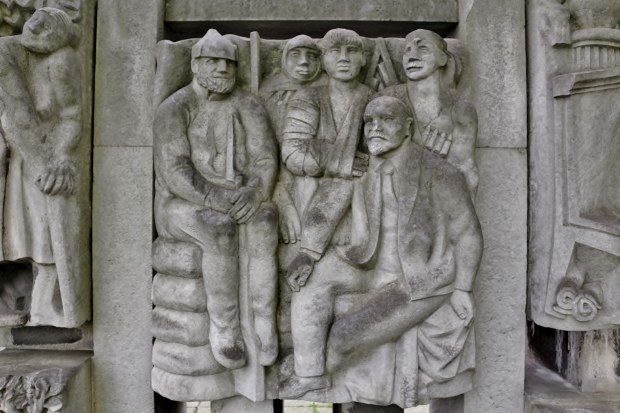
Die zentrale Figur der vierteiligen Glasmalerei ist ein Soldat der Nationalen Volksarmee neben dem Staatssymbol der DDR, einem goldenen Ährenkranz mit Hammer und Zirkel. Auf der rechten Seite sind Karl Marx und Friedrich Engels zu sehen, während links ein Seitenporträt Lenins vor einem roten Fahnenmeer erscheint. Von der Thematik her könnte es sich um ein typisches Kunstwerk der DDR handeln, zumal es sich auf einer ehemaligen Kaserne der NVA befindet. Ein genauerer Blick lässt jedoch Zweifel aufkommen, denn sowohl der skizzenhafte Stil als auch die erbärmliche Qualität der Farben passen nicht zum kunsthistorischen Kontext. Weiterlesen



